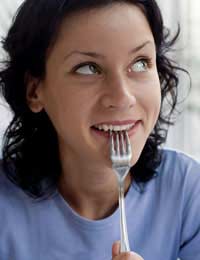Flavour Enhancers and Flavourings and Their Role

Everyone wants to eat food that tastes nice but, without adding additional flavour enhancers and flavourings, some processed foods would be bland, tasteless and unappetising. That’s why food manufacturers and processing plants include these additives in products.
Flavour enhancers are designed to enhance the existing flavour of products without adding any new tastes or flavours of their own. For example, perhaps the ingredients in the product only have a mild or subtle taste and need to be brought out more for consumers to actually notice the flavours when they come to eat the product. They’re used widely in foods and drinks and come in both natural and manmade or synthetic forms.
Flavour enhancers are labelled on food ingredient packets with E numbers from E600 to E699. Sometimes, however, they manufacturer may choose to use the long chemical name, rather than the shortened E number, which makes it more difficult for consumers to identify the presence of E numbers.
The flavour enhancers help to improve the taste of both sweet and savoury foods. For example, sweet foods that they’re commonly found in include cakes, biscuits, sweet snacks, breads and bakery products. As far as savoury products go, they’re widely found in soups, packet soups, pork pies, sausages, pre-cooked dried rice, sauces, crisps, snack foods and gravy granules.
Although you may think of flavour enhancers as a modern invention and indicative of the age of processed foods, some forms of flavour enhancers have existed for centuries. Take salt, for example. It’s been used for hundreds of years to improve the flavour of meat products and is perhaps the world’s best known natural flavour enhancer. Similarly, vinegar is another ingredient that’s been used for years to pep up flavours in foods and, on the sweet side as opposed to savour, sugar is commonly used to sweeten up certain foods. Without these store cupboard ingredients, many foods we know and love would be bland, boring and inedible.
Flavourings
Flavourings are a different kettle of fish. In contrast to flavour enhancers, flavourings really do what they’re name suggests and are used to add flavour to products. They’re generally added in small amounts to give a pleasant taste or smell to a product. However, unlike the rest of the E numbers, flavourings are governed by different laws to food additives and they’re not assigned any E numbers.
All products should say whether or not flavourings have been included in the ingredients, but the law doesn’t insist that exact flavourings have to be named. So a product label may say, “Contains added flavourings,” but will stop at that. It won’t be easy for you to tell exactly which individual flavourings are in the food.
For the consumer, this is hard to understand, especially as food additives are widely documented and have to be listed. If you’re unhappy not knowing exactly what you’re consuming, then the best bet is to avoid purchasing any products in which added flavourings are used.
The good news, however, is that major food sellers have become aware of the views of consumers and their concern about flavourings used in foods. In 2007, several of the major supermarkets announced that they would be taking steps to remove artificial flavours (and colours) from their own brand foods as soon as possible. This is in part due to the concerns of the effect certain ingredients and E-numbers may have on children’s health.


Re: Dangers and Side Effects of E Numbers
Is this the tip of the iceberg? Can't help thinking we all being slowly poisoned by convenience food. Convenient for…
Re: E200 - E299 Preservatives
Hallo I need advise on what preservetives and ant foaming agents to use for lemon juice. Also reconmondations on how much powders to…
Re: Top E Numbers to Avoid
Since Brexit, I have been adding a few extra E numbers in my products and my sales have boomed! I now sell the tastiest burger in town. E…
Re: E Numbers Not Suitable for a Halal Diet
Is E202 is halal?
Re: Does E631 Use Extracted Pig's Fat or Sardine Oil?
400
Re: E Numbers Not Suitable for a Halal Diet
E140 is a plant product, not derived from meat at all. Please check your facts.
Re: Top E Numbers to Avoid
I was prescribed amitriptyline for anxiety and got on well with the first box of tablets. After starting the second box I began to feel…
Re: E400 - E499 Thickeners, Stabilisers and Emulsifiers
All thickener agent name All emulsifier agents name Cemical use Food use
Re: Top E Numbers to Avoid
You say that E133 is banned in Germany, yet my GP has prescribed Fultium-D/Colecalciferol 800 out capsules with E133 and the Manufacturer…
Re: Does E631 Use Extracted Pig's Fat or Sardine Oil?
In India, there is a law already existing, that any food products having any non-vegetarian ingredients…